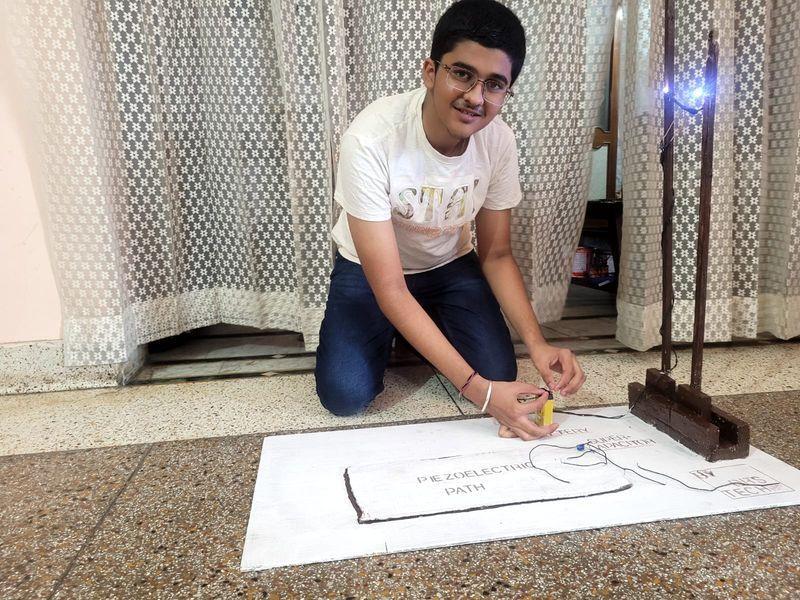
Hoshiarpur Student Builds Device to Generate Power from Footsteps
In a remarkable display of innovative thinking and scientific curiosity, a Class 8 student from Hoshiarpur, Punjab, has created a device that can harness energy from the simplest of human activities – walking. Sanchit, the young student, has sparked excitement among local authorities, scientists, and enthusiasts with his project, “Power beneath our feet,” which utilizes piezoelectric technology to convert footsteps into electricity.
The idea behind this innovative project is to generate power from the kinetic energy produced by human footsteps, which can be used to charge small devices such as mobile phones, LED lights, and even small appliances. This technology has the potential to revolutionize the way we think about power generation, especially in areas where traditional sources of energy are scarce or unreliable.
Piezoelectric materials, which are capable of generating an electric charge in response to mechanical stress, are the key components of Sanchit’s device. When a person walks on the device, the footsteps cause the piezoelectric material to compress and expand, generating an electric current. This current is then stored in a capacitor, which can be used to power small devices.
The device, which resembles a large, flat mat, is designed to be placed on a walking path or a floor. As people walk on it, the device converts the kinetic energy into electrical energy, which can be harnessed using a small circuit board and a power storage unit.
Sanchit’s project has not only caught the attention of local authorities but also of scientists and enthusiasts across the region. His innovative approach to harnessing energy has raised hopes of developing sustainable and eco-friendly power solutions, especially in areas where traditional energy sources are not available or are unreliable.
The young student’s project is a testament to the power of innovation and scientific curiosity, and it has the potential to inspire a new generation of scientists and engineers to think creatively and develop solutions to real-world problems.
The concept of harnessing energy from human movement is not new, but Sanchit’s device takes it to a new level by using piezoelectric technology to convert footsteps into electricity. This technology has the potential to be used in a wide range of applications, from powering small devices in remote areas to generating electricity for homes and businesses.
The impact of Sanchit’s project is not limited to the scientific community alone. It has the potential to benefit society as a whole by providing a sustainable and eco-friendly source of energy. As the world grapples with the challenges of climate change and energy security, innovative solutions like Sanchit’s device can play a vital role in reducing our reliance on fossil fuels and mitigating the environmental impact of our daily activities.
In conclusion, Sanchit’s project is a remarkable example of innovative thinking and scientific curiosity. His device has the potential to revolutionize the way we think about power generation, and it is a testament to the power of creativity and determination. As we move forward, it is essential that we continue to support and encourage young minds like Sanchit to develop innovative solutions to real-world problems.






